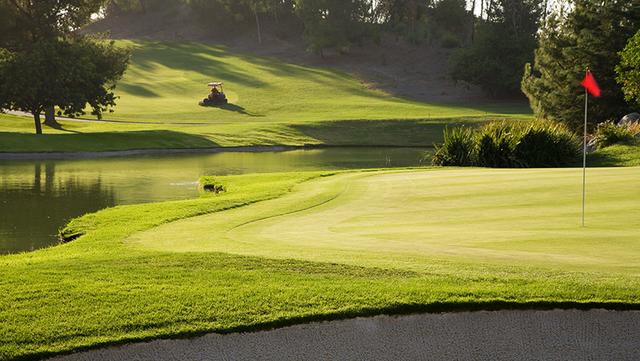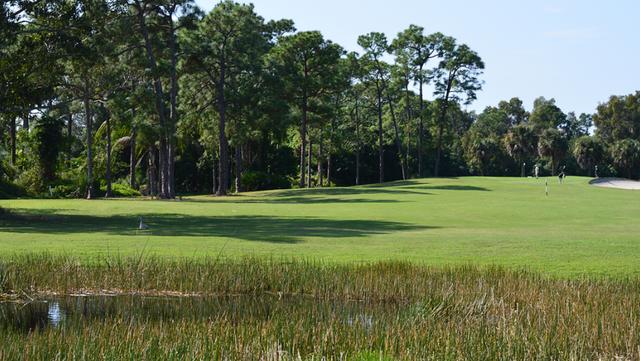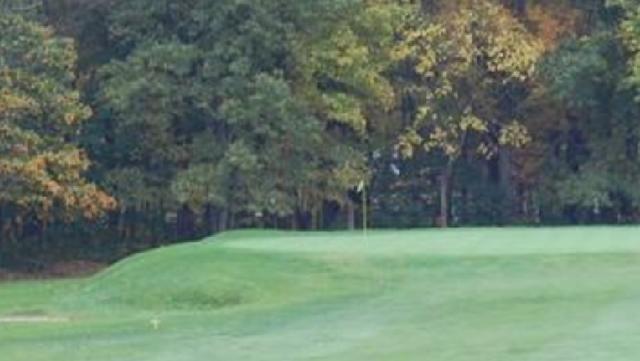
2 Steps to Healthier Greens
The two most highly effective, commonly overlooked maintenance practices for healthy greens — year after year
The greens are the most expensive asset on your golf course. Renovating a single green can cost upwards of $35,000. Consequently, like many club managers, you may opt to settle for inconsistent greens conditions, renovating only when conditions become unplayable. What you may not know is that there's an easier — and far more cost-effective — solution and all it involves are small changes to your yearly maintenance program.
Get to the Root of the Matter: Why Do Golf Greens Suffer?
Consider what greens endure. The expectations for performance are high, yet the greens turf is put under the most stressful conditions possible for a plant. Depending on the season and turf variety, greens are typically mowed to 1/8 inch or below, leaving the turf vulnerable to a tremendous amount of stress from foot traffic, weather, and pests.
Given your limited control of what goes on above the soil, you need to create the best possible environment beneath the soil in order for the plant to survive. This means managing the organic matter.
If organic matter is too high (which is frequently the problem), water retention will increase, creating a soft, wet green surface and an unhealthy environment for the plant roots. If it’s too low, the greens will be firm, dry out, and dry patches will occur.
The margin for error is perilously slim (as little as 2 to 4 percent) so managing organic matter properly is critical, which leads us to the first step to healthy greens.
Step 1: Test Your Turf
In order to know the organic matter composition of your greens, you need to test it on an annual basis. The test is called a soil physical analysis. There are reputable labs across the country that can help you run the test and review the results.
Your superintendent should run this test every year and record the results before implementing a cultural program for your greens. If organic matter is high, you need more aggressive core cultivation, verticutting, and topdressing programs. If it’s too low, you should implement a lighter program for the year.
Over time, the historical data from your annual soil physical analysis test results will reveal what direction your greens are trending — in other words, whether organic matter is going up or down over time. Analysis of this information can be used to create a cultural program that will help stabilize and protect your greens' long-term health.
But, that's just the first step. Your cultural program runs the risk of exacerbating the problem if you don’t use the correct topdressing.
Step 2: Get Your Topdressing’s Secret Formula
Selecting your topdressing is an important (yet often underplayed) decision. Make sure that the topdressing you're applying is compatible with your existing greens soil profile. A frequent mistake is using a topdressing sand that is too fine. This can wreak havoc as continued use of a finer topdressing sand over multiple years can negatively impact drainage and soil oxygenation.
To select the correct topdressing, you have to test it and compare it to your existing greens soil profile. Thankfully, the test to identify your topdressing composition is the same test you will run to determine the organic matter in your soil — the soil physical analysis.
However, knowing your current topdressing composition doesn’t necessarily make it easy to select a topdressing that is an exact match. At BrightView, we build graphical models to show the recommended topdressing composition as it compares to the existing greens soil profile. Our PhDs on staff help interpret the data to make the selection. This enables us to find the absolute best match. A reputable lab should be able to help you with this process.
Some courses end up with a mix of topdressings because they don’t test and match their topdressing every year. If this is the case on your course, you may need an agronomist to assist you with selecting the appropriate topdressing and designing a cultivation program that will correct the issue over time.
Make Testing Standard on Your Course
This type of testing and analysis, along with numerous other scientific, data-driven tests, come standard on the courses BrightView maintains. We design annual agronomic plans and make seasonal decisions based on both the results of our testing and detailed historical data that shows what worked or didn’t work in prior years. This scientific approach uses real-time, onsite data to ensure the golf courses we maintain are always in excellent condition.
But short of hiring experts to help with your golf course maintenance, there is something you can do to ensure healthy greens: do an annual soil physical analysis test and use it to check your turf's organic matter and to determine the best topdressing for your greens.
Outstanding Golf Course Maintenance
You set the standard, we make it happen. We’re laser-focused on continuously refining the science, technology, and operations of golf course maintenance so we can bring our clients a competitive advantage and a course their players are proud of.




